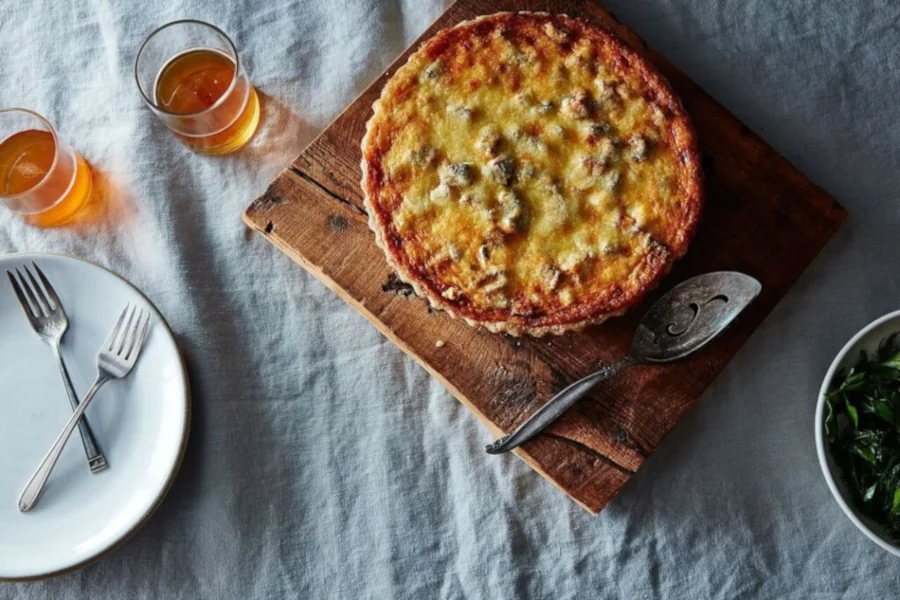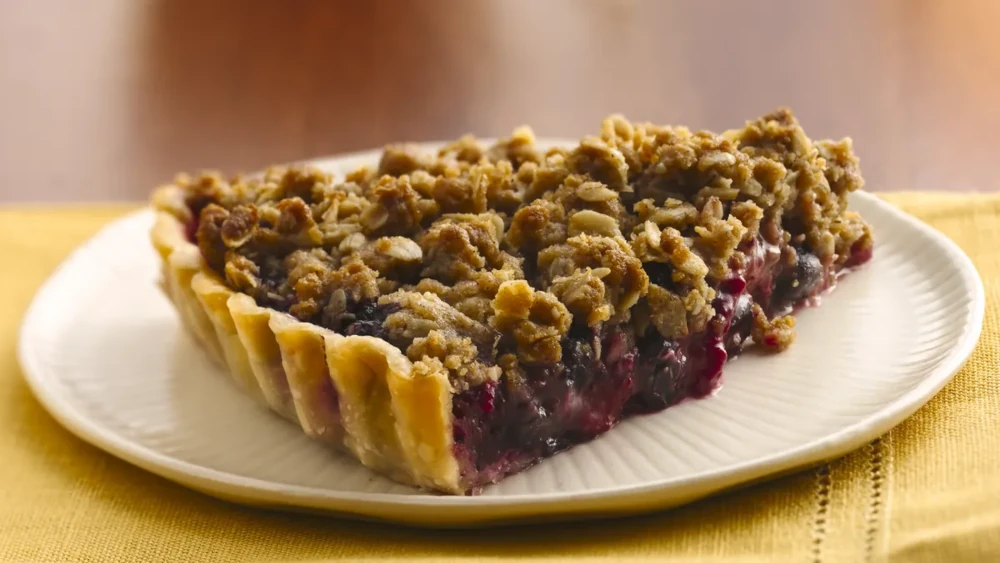Delicious Canterbury Tart Recipe—Quick and Tasty

Let’s be blunt: the world doesn’t need another overcomplicated tart recipe. Real people want real desserts that taste amazing and don’t take half a day to make.
So here it is—the Canterbury Tart. A British classic that’s criminally underrated, shockingly simple, and, dare we say, far more satisfying than your overpriced patisserie creations. Yes, we said it.
Why the Canterbury Tart Deserves Your Respect (and Cravings)
The traditional Canterbury Tart is a gem that has been buried under layers of unnecessary culinary elitism. Here’s why it deserves a revival:
- It’s lemony, sharp, and unapologetically bold—not sickly sweet like most commercial tarts.
- You only need basic ingredients—no saffron threads or imported yuzu fruit.
- It’s quick. Seriously quick. You could whip this up in under an hour.
- It doesn’t pretend to be fancy—but it tastes like it is.
Now, before the food police scream “blasphemy” at how “unrefined” this tart is, let’s agree on one thing: taste matters more than technique. Period.
The Backlash Against Simplicity
Let’s talk about the backlash. There’s a certain cult in the culinary world that believes only painstaking, labor-intensive dishes deserve praise. You know the type:
- “If your tart doesn’t rest for 48 hours, it’s not worth eating.”
- “You must blind bake the pastry with hand-carved ceramic weights.”
- “Fresh lemons only—preferably grown on the Amalfi Coast.”
Get over yourselves.
The Canterbury Tart works precisely because it strips away the nonsense. It’s real. It’s raw (figuratively, not literally), and it punches above its weight in flavor. If you need to impress a dinner guest in under an hour, this is your ace.
The Quick & Tasty Canterbury Tart Recipe

Let’s cut to the chase. You want the recipe? Here it is—with no fluff, no sacred rituals, and no culinary gatekeeping.
Ingredients
- 1 sheet of shortcrust pastry (store-bought is fine—yes, we said it)
- 150 g (3/4 cup) caster sugar
- Zest of 2 lemons
- Juice of 2 lemons
- 2 large eggs
- 1 egg yolk
- 75 g (1/3 cup) unsalted butter, melted
- A pinch of salt
- 1 tbsp finely ground almonds (for a nutty twist) is optional
- Icing sugar, to dust
Controversial Notes on Ingredients:
- Shortcrust pastry from the supermarket? Yes. Most people can’t tell the difference, and it saves 40 minutes of your life.
- Caster sugar instead of powdered? Absolutely—it gives a better texture.
- Butter over cream? Always. The fat binds better with lemon juice, creating that rich curd-like feel.
Method: The No-Bull Way
Follow these steps. It is not that important.
- Put your oven on to preheat at 180°C (350°F).
- Roll out the pastry into an 8-inch tart tin lined with it. Prick the base with a fork.
- Blind bake for 10-12 minutes using baking beans or rice. This is the one “fussy” step that’s non-negotiable unless you enjoy soggy bottoms.
- Mix sugar and lemon zest in a bowl. Let it sit for 5 minutes so the zest oils infuse the sugar. It’s a simple flavor bomb.
- Add eggs, yolks and lemon juice. Blend together.
- In a slow stream, pour in the melted butter.
- Put in a pinch of salt. Believe us—salt changes the taste of lemons.
- Optional: Add some more texture with some ground almonds.
- In the pre-baked crust pour the mixture.
- Bake for 20-25 minutes or until just set through the center and with a little jiggle.
- Cool off the dust with icing sugar. Serve it warm or cold any way you like—both are deliciously good.
This Recipe Works (Even if It Is Fought Over by Critics)
Let’s dismantle the so-called “rules” that purists love to throw at you:
- “You need to temper the eggs!” — No, you don’t. The slow whisk with warm butter does the trick.
- “Lemon curd must be made separately.” — Why? This bakes into a curd in the oven. Less washing up, same flavor.
- “The crust must be homemade.” — Sure, if you’ve got 3 hours and a therapy session booked for pastry trauma.
Here’s the reality: this tart tastes like a lemon cloud wrapped in golden pastry, and not one of your guests will care how the crust came to be.
Elevate It—Without Selling Your Soul
Want to dress it up without compromising its identity? Here’s how:
- Add ultimately with cool and fresh raspberry to get a sweet scratch contrast—or try pairing it with a spoonful of homemade blueberry jam for a fruity punch.
- Top with a dollop of crème fraiche or Greek yogurt.
- Add some butter with thyme flavor to the mix to get a herby touch.
- Sub the lemons with limes in case you are in the mood to be wild.
You can “gourmet it up” without becoming a food snob. Just don’t lose the simplicity that makes it magical.
What the Critics Will Say—And Why They’re Wrong
Expect backlash from the culinary upper crust. Their arguments will go like this:
- “It’s not authentic!”
Neither are most “authentic” dishes served in restaurants. Deal with it.
- “Store-bought pastry is lazy.”
It’s not lazy if it lets you focus on flavor. It’s smart.
- “You can’t call this a Canterbury Tart without XYZ.”
Yes, we can. The essence of a Canterbury Tart is lemon-forward, custardy, and humble. This version nails that.
Conclusion
In a world obsessed with culinary perfection, the Canterbury Tart is a rebellious throwback to honest, uncomplicated baking. It doesn’t try to be trendy. It doesn’t need Instagram filters. It’s bold. It’s zesty. It’s real.
So if you’re tired of gatekeeping recipes and baking snobbery, make this tart. Serve it with pride—and if you’re planning the full menu, check out these healthy summer dinners for inspiration. And if anyone complains it’s not “elevated” enough, hand them a fork and let the flavor speak for itself.
Pro tip: It tastes even better the next day—if it lasts that long.
FAQs
Do I have to blind bake the crust?
Yes. This is one of the only non-negotiables. Skip it, and you risk a soggy mess that no amount of lemon goodness can save.
Is it possible to use bottled lemon juice instead of fresh lemons?
Technically, yes. It is only when you are in deadly need. Fresh lemons provide that Kermit-like citrus zing that bottled juice is only pretending to have.
Is it possible to replace shortcrust with puff pastry?
It is possible although you will have nobody to blame but yourself if the filling drenches your flaky foundation like a crime scene. Tart fillings do not stick in puff pastry.
